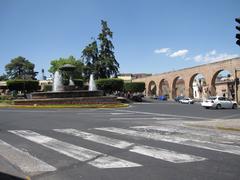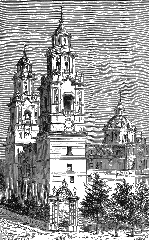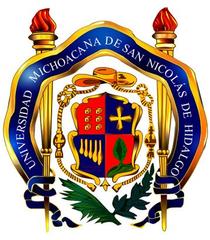
Comprehensive Guide to Visiting Morelia, Morelia Municipality, Mexico
Date: 13/08/2024
Captivating Introduction
Welcome to Morelia, a city where the past and present dance harmoniously under the Mexican sun. Imagine walking through streets where pink stone buildings tell tales of colonial splendor and indigenous resilience. Morelia, originally known as Valladolid, was established in 1541 by Antonio de Mendoza, the first viceroy of New Spain (LA Times). The city’s strategic location in the central highlands of Mexico made it a crucial colonial outpost, and its architectural grandeur has earned it a place as a UNESCO World Heritage Site since 1991 (LA Times).
Morelia’s historical significance extends beyond its colonial roots. Renamed in 1828 to honor José María Morelos, a key figure in the Mexican War of Independence, the city is adorned with murals depicting pivotal moments in Mexican history (LA Times). But Morelia isn’t just about history; it’s a vibrant, living city where every corner offers a new sensory experience. Picture yourself savoring regional dishes like sopa tarasca and uchepos, walking on cobblestone streets under the glow of the illuminated Morelia Cathedral, and hearing the lively sounds of local music during festivals.
Morelia is a city that invites you to explore its hidden gems and local secrets. Whether it’s the best coffee in town at Café Europa or a romantic stroll down Callejón del Romance, there’s always something new to discover. And for those looking to immerse themselves in the local culture, learning a few basic Spanish phrases can go a long way in enhancing your experience. So, lace up your walking shoes, grab a map, and get ready to uncover the rich tapestry of Morelia’s history, culture, and hidden treasures.
Table of Contents
- Exploring Morelia: A Journey Through Time and Culture
- Visitor Tips for Morelia, Morelia Municipality, Mexico
- Cultural Insights
- Welcome to Morelia - The Heartbeat of History
- Architectural Wonders - Morelia’s Stone Symphony
- Festivals - The Pulse of Morelia
- Gastronomy - A Feast for the Senses
- Museums - Echoes of the Past
- Indigenous Influence - The Soul of Morelia
- Music and Performing Arts - Morelia’s Melodic Heartbeat
- Educational Institutions - Cradles of Knowledge
- Visitor Tips - Your Passport to Morelia
- Your Morelia Adventure Awaits
Exploring Morelia: A Journey Through Time and Culture
Did You Know?
Morelia is a city where pink stone buildings glow under the Mexican sun, weaving stories of colonial grandeur and indigenous resilience. It’s a place where history and culture blend seamlessly, creating a vibrant tapestry of experiences for every visitor.
Stepping Back in Time
Founding and Early History
Imagine strolling through streets that look like they’ve been plucked straight out of a Spanish telenovela, but with fewer dramatic plot twists and more delicious tacos. Morelia, originally named Valladolid, was founded in 1541 by Antonio de Mendoza, the first viceroy of New Spain. The city was strategically located in the central highlands of Mexico, making it a significant colonial outpost (LA Times).
Colonial Influence
The Spanish colonial influence in Morelia is unmistakable. Picture broad boulevards lined with Baroque architecture and a cathedral that could rival any in Europe. The use of local cantera rosa, a pink sandstone, gives the city a unique and alluring glow (LA Times).
The Independence Spark
Morelia played a pivotal role in the Mexican War of Independence. The city was renamed in 1828 to honor José María Morelos, a key military leader in the fight for independence. This is the ideological cradle of Mexican independence, with murals adorning public buildings that depict significant moments in Mexican history (LA Times).
Hidden Gems and Local Secrets
- Café Europa: Tucked away in a quiet corner, this café serves the best coffee in town.
- Tarascan Market: A bustling market where you can find unique handcrafted items made by the indigenous Tarascan people.
- Callejón del Romance: A charming alleyway perfect for a romantic stroll.
Sensory Overload
- Sight: The illuminated Morelia Cathedral at night is a sight to behold.
- Sound: The vibrant sounds of local music fill the air, especially during festivals.
- Taste: Savor the flavors of regional dishes like sopa tarasca and uchepos.
- Smell: The aroma of fresh tortillas being made on street corners.
- Touch: The feel of cobblestone streets underfoot as you explore the historic center.
UNESCO World Heritage Site
In 1991, Morelia’s historic center was designated a UNESCO World Heritage Site. The city’s streets still follow the original layout, and its preservation owes much to the geology of the area. Morelia sits on a miles-wide sheet of solid bedrock, which has protected it from seismic shifts that have leveled other historic cities in Latin America (LA Times).
Interactive Adventures
- Mini-Quest: Find the hidden mural of Morelos and snap a selfie with it.
- Food Challenge: Taste-test your way through the best street food stalls in Morelia.
Practical Tips with a Twist
- Best Time to Visit: The weather in Morelia is generally mild, but the best time to visit is during the dry season from November to April. Morelia is a walkable delight, so lace up those shoes tight!
- Getting Around: Morelia is a walkable city, especially in the historic center. However, renting a car can be convenient for exploring nearby attractions.
- Safety: While Morelia is considered one of the safest cities in Michoacán, it is always advisable to stay in well-frequented areas and be cautious, especially at night.
- Cultural Etiquette: In Morelia, it’s customary to greet everyone with a friendly ‘¡Hola!’ and a smile—think of it as the city’s way of saying, ‘Welcome to our colorful, vibrant world!’ Learning a few basic Spanish phrases can go a long way in enhancing your experience.
Local Lingo Lessons
- ¿Dónde está el mercado? (Where is the market?)
- ¡Qué padre! (How cool!) Use these phrases to impress the locals and make your interactions more fun.
Pop Culture References
Morelia has been featured in various movies and TV shows, adding to its allure. Keep an eye out for familiar scenes as you explore the city.
Seasonal Highlights
- Day of the Dead: Experience the vibrant and colorful celebrations in Morelia.
- Morelia International Film Festival: A must-visit event for movie buffs.
Myth Busting
Some might think Morelia is just another colonial city, but its unique blend of cultures and rich history set it apart. Discover its hidden depths and surprises as you wander its streets.
Storytelling Elements
Let the stories of historical figures like José María Morelos and local legends guide you through Morelia’s past. Every corner has a tale to tell, waiting for you to uncover.
Call to Action
Ready to explore the rich tapestry of Morelia’s history and culture? Download Audiala to unlock expert insights and hidden gems, making your visit truly unforgettable.
Visitor Tips for Morelia, Morelia Municipality, Mexico
Imagine This…
Imagine walking through a city where every building glows pink in the setting sun—welcome to Morelia, the gem of Michoacán. Forget the usual tourist traps; let me show you the real Morelia, where the churros are hot, and the stories are even hotter!
Time Travel Through Transportation
Morelia is well-connected and accessible through various modes of transportation. The city has its own airport, Morelia International Airport (MLM), which offers flights to major cities in Mexico and the United States, including Chicago, Dallas, Los Angeles, San Jose, and Oakland (Sailingstone Travel). For those traveling by bus, Morelia is easily reachable from many major cities in central and western Mexico. However, note that direct buses from Guanajuato are currently unavailable, requiring a transfer in Irapuato (Sailingstone Travel).
The main bus terminal is located quite a distance from the historical center, but Uber operates in the city, providing a convenient and often safer alternative to local taxis (Sailingstone Travel).
Where to Stay
Morelia offers a range of accommodation options to suit different budgets and preferences. For a unique experience, consider staying in one of the historic buildings converted into boutique hotels. Websites like Booking.com and Airbnb provide numerous options, from luxury hotels to budget-friendly hostels.
Why You Should Learn a Little Spanish
While Morelia is a beautiful city with a rich history, it is important to note that English is not widely spoken. Most of the museums and historical sites have signage only in Spanish (Sailingstone Travel). It is advisable to learn some basic Spanish phrases or use a translation app to enhance your experience. Learn to say ‘¿Dónde está el baño?’ (Where is the bathroom?)—trust me, you’ll thank me later!
Safety First
Morelia is generally considered a safe city for visitors. The historic center, where most attractions are located, is well-patrolled and bustling with tourists (Mexico Travel Blog). However, as with any urban area, it is wise to exercise common-sense precautions, such as being aware of your surroundings and safeguarding personal belongings.
Best Time to Visit
The best time to visit Morelia is from December to February when the climate is cooler and more temperate. This period allows visitors to enjoy the city without the sweltering heat of summer (Mexico Travel Blog). Visit in November for the enchanting Day of the Dead celebrations, where the city comes alive with color and tradition.
Taste Morelia
Morelia is a paradise for food lovers. Be sure to try traditional dishes such as carnitas, enchiladas, and the iconic “tres leches” cake. Local markets and street food stalls offer a variety of delicacies that fill the air with the aromas of spices and freshly cooked food (Road to the Unknown).
Cultural Etiquette
When visiting religious sites such as the Morelia Cathedral and the Santuario de Guadalupe, dress modestly and respect local customs. Photography may be restricted in certain areas, so always ask for permission before taking pictures.
Must-Visit Attractions
- Historic Center: A UNESCO World Heritage site, the historic center of Morelia is a labyrinth of over 200 splendid historic buildings constructed from the region’s pink stone (Road to the Unknown).
- Morelia Cathedral: Known for its stunning architecture, the cathedral features a mix of classical Herreresque, baroque, and neoclassical styles. It is especially beautiful when lit up for the Encendido de Catedral (Road to the Unknown).
- Casa Natal de Morelos: The birthplace of José María Morelos, a key figure in Mexico’s independence movement, now serves as a museum (Sailingstone Travel).
- Aqueduct: An architectural masterpiece with 253 ancient colonial arches, built in the 18th century to provide the city with drinking water (Road to the Unknown).
- Santuario de Guadalupe: Known for its dazzling interior, this church is a must-visit for its pink paint and golden embellishments (Mexico Travel Blog).
Hidden Gems
- Secret Rooftop Gardens: Morelia is full of hidden rooftop gardens that offer stunning views of the city skyline. These lush oases are perfect for a peaceful retreat (Road to the Unknown).
- Jardín de las Rosas: A peaceful rose garden situated between the Santa Rosa de Lima Temple and the Conservatorio de las Rosas, featuring several restaurants and cafes (Mexico Travel Blog).
Festivals and Events
- Noche de Muertos (Day of the Dead): If you visit Morelia during this celebration on November 1, you will witness vibrant colors, intricate altars, and lively processions. It is a rich tradition that pays homage to the departed (Road to the Unknown).
- Traditional Dance Performances: Attend a performance of La Danza de los Viejitos, a traditional folk dance of Michoacán, to experience the region’s cultural heritage (Road to the Unknown).
Day Trips
- Lake Pátzcuaro and Janitzio Island: Just a short drive from Morelia, these locations are renowned for their lakeside landscapes and vibrant Day of the Dead celebrations (Mexico Travel Blog).
- Caves of Cuitzeo: Venture beyond the city limits to explore these caves filled with stalactites, stalagmites, and awe-inspiring rock formations (Road to the Unknown).
Photography Tips
Morelia offers numerous Instagram-worthy spots, from the historic aqueduct to the stunning interiors of its churches. The best time for photography is early morning or late afternoon when the light is soft and golden. Always be respectful of local customs and ask for permission before photographing people or religious sites. Challenge: Find the hidden mural in the alley behind the Morelia Cathedral. Hint: It’s a tribute to the city’s revolutionary past.
Final Tips
- Currency: The local currency is the Mexican Peso (MXN). It is advisable to carry some cash, as not all places accept credit cards.
- Hydration: The climate can be quite warm, so stay hydrated by drinking plenty of water.
- Local Guides: Hiring a local guide can enhance your experience by providing in-depth knowledge and insights into Morelia’s history and culture.
- Pop Culture: Morelia once played a starring role in the film ‘The Other Conquest’—can you spot the filming locations?
By following these tips, visitors can make the most of their trip to Morelia, ensuring a memorable and enriching experience in this beautiful colonial city. Ready to uncover Morelia’s secrets? Download Audiala for expertly crafted audio guides that will make you feel like a local in no time.
Cultural Insights
Welcome to Morelia - The Heartbeat of History
Imagine stepping into a city where every cobblestone whispers tales of revolution, romance, and resilience. That’s Morelia for you. A city where history isn’t just a subject but a living, breathing entity. Founded by the Spanish in 1541, Morelia, initially named Valladolid, was a cornerstone during the Mexican War of Independence. Renamed in 1828 to honor the revolutionary hero José María Morelos y Pavón, the city’s historical center, a UNESCO World Heritage Site since 1991, is an open-air museum of Renaissance, Baroque, and Neoclassical architecture (Wikipedia).
Architectural Wonders - Morelia’s Stone Symphony
Morelia’s historic center is like a beautifully composed symphony in stone. The Morelia Cathedral, with its towering pink stone facade, stands as a poetic testament to Baroque grandeur. Imagine the sunset casting a golden hue on its twin towers – simply mesmerizing (Lonely Planet). Don’t miss the Palacio de Gobierno, originally a seminary, now adorned with Alfredo Zalce’s murals that colorfully narrate Mexico’s journey to independence (Planetware).
Festivals - The Pulse of Morelia
Morelia’s festivals are a vibrant tapestry of color, music, and tradition. The Day of the Dead (Día de Muertos) transforms the city into a surreal blend of solemnity and celebration, with parades, altars, and offerings that capture the essence of life and death (Traveling with Aga). Then there’s the Morelia International Film Festival, a cinematic carnival where filmmakers and cinephiles converge to celebrate the magic of movies (MexConnect).
Gastronomy - A Feast for the Senses
Prepare your taste buds for a culinary adventure. Morelia’s cuisine is a delightful dance of indigenous and Spanish flavors. Savor the unique corundas (triangular tamales), uchepos (sweet corn tamales), and the rich Tarascan soup. Michoacán-style carnitas and chiles en nogada promise a flavor explosion. For dessert, indulge in chongos zamoranos, ates morelianos, and buñuelos – asweet end to a gastronomic journey (Visit Mexico).
Museums - Echoes of the Past
Dive into Morelia’s storied past at its museums. The Museo Regional Michoacano, housed in an 18th-century baroque palace, offers a treasure trove of pre-Hispanic artifacts and colonial art (Lonely Planet). The Centro Cultural Clavijero, a former Jesuit college, now pulsates with art exhibitions, concerts, and cultural events (Planetware).
Indigenous Influence - The Soul of Morelia
The spirit of the Purépecha and Matlatzinca cultures is woven into Morelia’s fabric. Explore local markets to find handmade crafts and textiles that echo the region’s rich indigenous heritage (Wikipedia, Playas y Plazas).
Music and Performing Arts - Morelia’s Melodic Heartbeat
From classical symphonies to contemporary rhythms, Morelia’s music scene is a vibrant mosaic. The annual Morelia Music Festival is a melodic feast, while the Teatro Ocampo stages a variety of performances, immersing you in the city’s artistic soul (MexConnect).
Educational Institutions - Cradles of Knowledge
Home to the historic Michoacán University of San Nicolás de Hidalgo, Morelia has long been a beacon of intellectual pursuit. Founded in 1540, the university continues to shape the region’s academic and cultural landscape (Britannica).
Visitor Tips - Your Passport to Morelia
Best Time to Visit: Late October to early November for the Day of the Dead or October for the Film Festival (Traveling with Aga).
Getting Around: The historic center is best explored on foot. For longer trips, hop on a Colectivo van (Traveling with Aga).
Safety: Morelia is generally safe, but stay vigilant. Stick to populated areas and avoid solo nighttime strolls (Traveling with Aga).
Accommodation: Choose a place in the historic center for easy access to attractions (Roaming Around the World).
Local Etiquette: Morelians are friendly. A few Spanish phrases can make your interactions even warmer (Roaming Around the World).
Your Morelia Adventure Awaits
Ready to explore Morelia’s rich cultural tapestry? Download Audiala to uncover the city’s hidden gems and stories, turning your trip into an unforgettable adventure. Dive into the heart and soul of Morelia, where every corner has a story to tell.
References
- ‘Exploring Morelia,’ 1993, LA Times source
- ‘Exploring Morelia,’ 2002, LA Times source
- ‘Morelia,’ 2024, Wikipedia source
- ‘Morelia’ 2024, Lonely Planet source
- ‘Morelia,’ 2024, Planetware source
- ‘Morelia,’ 2024, Traveling with Aga source
- ‘Morelia,’ 2024, MexConnect source
- ‘Morelia,’ 2024, Visit Mexico source
- ‘Morelia,’ 2024, Roaming Around the World source




